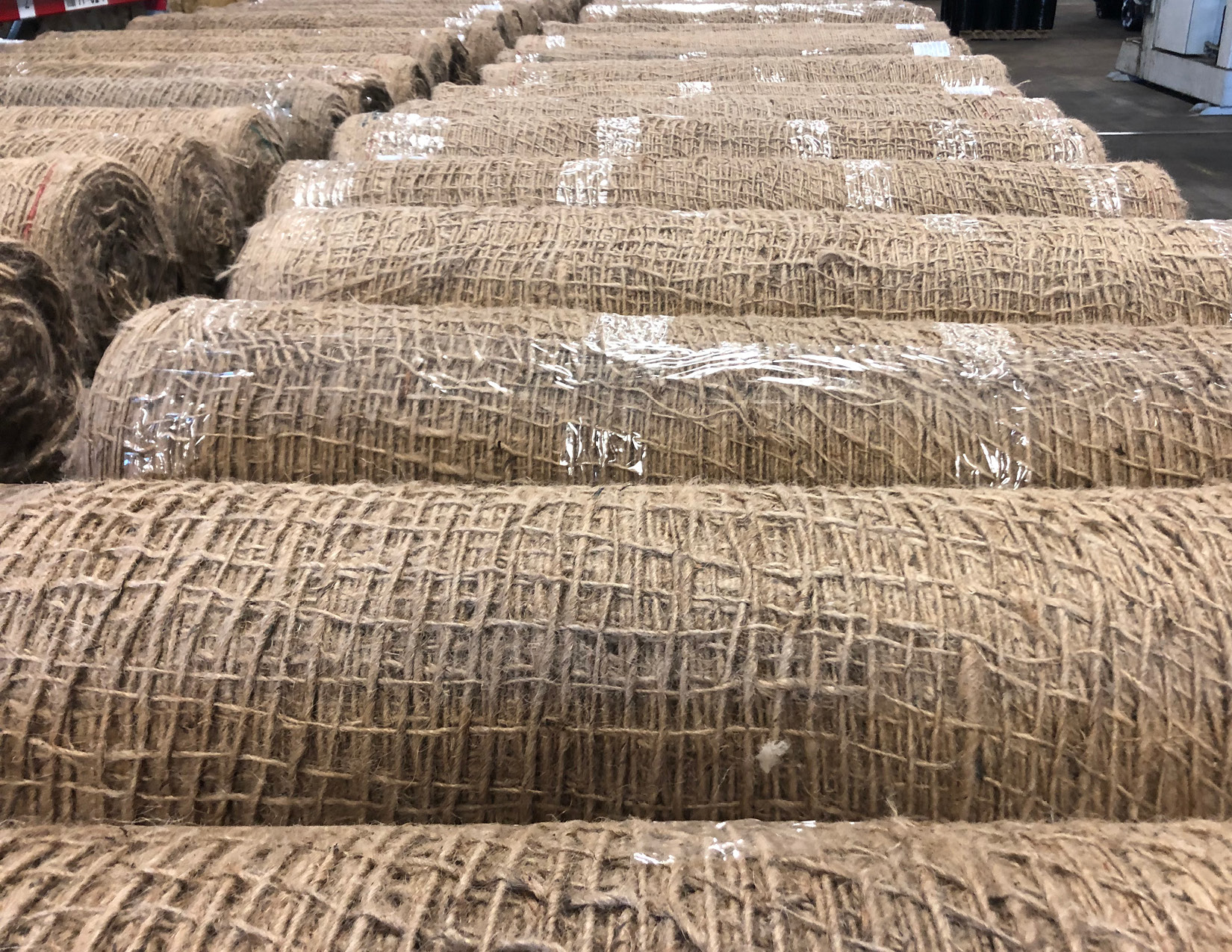- June 7, 2024
- Posted by: wellcoindustries
- Categories: Erosion Control, Jute Mesh
Jute netting is a versatile and eco-friendly material used in various applications, from erosion control to gardening. To choose the right jute netting for your needs, it’s important to understand the specifications that determine its effectiveness and suitability for different tasks.

What is Jute Netting?
Jute netting is made from natural jute fibers, which are biodegradable and environmentally friendly. This makes it an excellent choice for projects that require sustainable materials. Jute netting is commonly used in landscaping, agriculture, and construction for soil stabilization, seed protection, and erosion control.
Key Specifications of Jute Netting
1. Mesh Size
- Definition: Mesh size refers to the size of the openings in the netting.
- Importance: The mesh size affects how well the netting can hold soil, seeds, or mulch in place. Smaller mesh sizes provide better containment and support for smaller seeds and finer materials.
- Typical Sizes: Common mesh sizes range from 10mm to 50mm.
2. Weight
- Definition: The weight of jute netting is usually measured in grams per square meter (gsm).
- Importance: Heavier netting is more durable and can handle harsher conditions, but lighter netting is easier to install and manage.
- Typical Weights: Standard weights range from 500gsm to 900gsm.
3. Width and Length
- Definition: These dimensions determine the size of the netting roll.
- Importance: The width and length of the netting should match the size of the area you need to cover. Wider rolls cover more area and reduce the number of seams needed.
- Typical Sizes: Rolls commonly come in widths of 1 to 4 meters and lengths of 25 to 100 meters.
4. Biodegradability
- Definition: This refers to how quickly the jute netting decomposes when exposed to environmental elements.
- Importance: For projects that aim to integrate the netting into the soil, higher biodegradability is preferred.
- Typical Decomposition Time: Jute netting typically decomposes within 6 to 24 months, depending on environmental conditions.
5. Tensile Strength
- Definition: Tensile strength measures how much weight the netting can support before breaking.
- Importance: Higher tensile strength is essential for areas with heavy rainfall or high wind speeds.
- Typical Range: Tensile strengths vary widely but are generally between 1.5 kN/m to 3 kN/m.
Choosing the Right Jute Netting
When selecting jute netting, consider the specific requirements of your project:
- For erosion control on slopes, choose a heavier, high-tensile strength netting with smaller mesh size.
- For gardening and protecting seeds, lighter netting with appropriate mesh size will suffice.
- For large areas, opt for wider and longer rolls to minimize seams and simplify installation.
Benefits of Jute Netting
- Eco-Friendly: Made from natural fibers, it decomposes without harming the environment.
- Versatile: Suitable for a wide range of applications, including erosion control, seed protection, and more.
- Cost-Effective: Jute netting is often more affordable compared to synthetic alternatives.
Conclusion
Understanding the specifications of jute netting helps in choosing the right product for your needs. By considering mesh size, weight, width and length, biodegradability, and tensile strength, you can ensure that your jute netting will effectively support your project goals while being kind to the environment.
